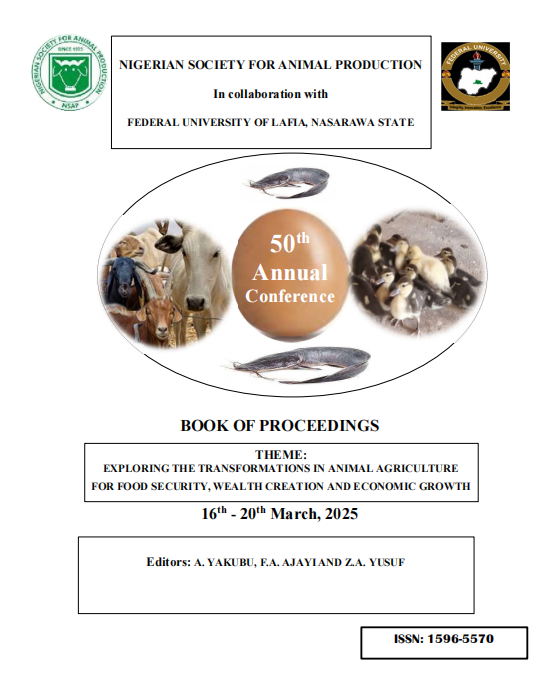AVAILABILITY OF DIFFERENT DUCKWEED SPECIES (LEMNA) WITHIN IBADAN METROPOLIS
Keywords:
Duckweed, Feed resources, Fish farmers, Production, IbadanAbstract
Due to the exorbitant cost of conventional feed ingredients and competition between humans and animals for these ingredients, there is the need to seek alternative feed resources. One of the numerous alternative feed resources is the use of aquatic weeds in feeding ruminants. Duckweed is an effective aquatic plant with immense potentials, yet its utilization and production remain remarkably low in Nigeria. This is likely due to lack of knowledge about its potential, production expertise, and nutrient make-up. Therefore, it is necessary to investigate the availability of various duckweed species within Ibadan Metropolis. A well-structured questionnaire was administered to elicit information on the socio-economic characteristics of fish pond owners. Samples of duckweed (lemna) were collected and identified. Samples of water from the pond were also collected to evaluate the presence of heavy metals. The survey shows that there was no illiterate amongst the pond owners, 60% attended secondary school and 40% tertiary institution. 20% were full time farmers, traders, professionals and 40% Artisans. 40% of pond owners have 5-10years of farming experience while 60% have 15-20 years. It was observed that all the pond owners are aware lemna have different species and types. 60% of pond owners are aware of three lemna specie while 40% are aware of four different species. 40% of pond owners claimed that lemna is useful while 60% claim otherwise. Half of the respondents who claimed duckweed is useful use it to feed pigs while the remaining half uses it to feed tilapia. The water analysis revealed that significant differences (P<0.05) were observed for all heavy metals and nitrogen. Spirodela polyrhiza generally had higher values for most heavy metals, Lemna paucicostata had lower values for copper (0.06mg/l), and chromium (0.07mg/l) while Lemna aequinoctialis had higher values for chromium(1.32mg/l) and cadmium (3.11mg/l). The study concluded that lemna can be a sustainable and nutritious feed option for livestock, particularly in regions where traditional feed sources are scarce or expensive. Incorporating lemna into livestock diets can help improve animal nutrition, productivity, and overall health.

